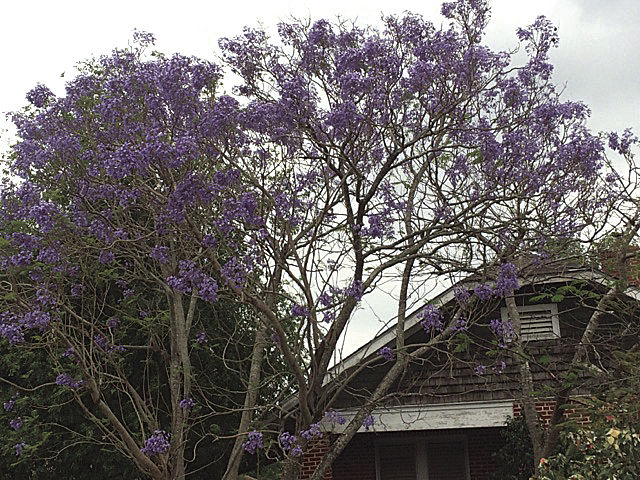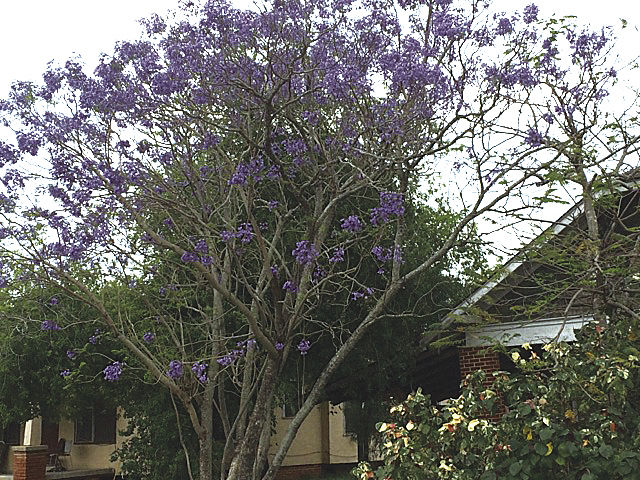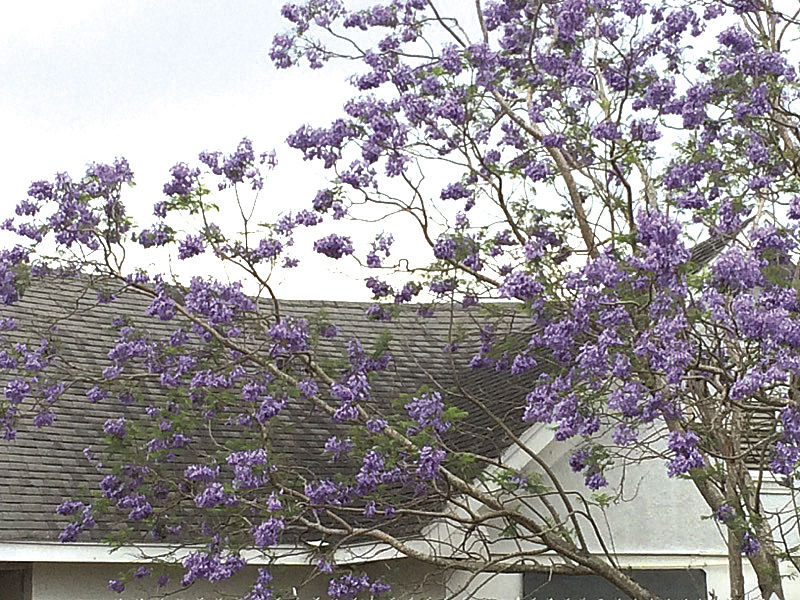BY LORI MURRAY
While not native to the Valley, the beautiful blue-flowered jacaranda tree that has been introduced to most tropical and subtropical regions of the world thrives in USDA zones 9b through 11, and it surprises me that we don’t see more of these beauties in our area. You can see jacarandas here and there around Harlingen showing off their fairy-tale lavender blooms (I’ve seen them on the south side of Tyler about 10th Street and also on East Jackson between 6th and 13th, and they have been used near the street to landscape the Embassy Suites Hotel near the new convention center in McAllen.) The most commonly seen is the Blue Jacaranda (Jacaranda mimosifolia) whose arresting panicles of purple-blue seem almost other-worldly in their intensity. The established jacaranda can tolerate drought and brief spells of frost and freeze. In fact, established trees 30 miles east of Los Angeles show little visible damage from winter temperatures that occasionally dip to 10 degrees for short (several hour) periods, but young trees can be damaged by temperatures below 26 degrees.
The jacaranda prefers a fertile soil but will settle for any of a variety, it requires good drainage, and it flowers best when planted in full sun. In time, the tree will get quite large (50 feet) and make an umbrella-like canopy that produces dappled shade. Give some thought to placing the jacaranda because it is a typical ornamental tree. It flowers abundantly in full sun, but those same flowers that can last up to two months of spring into summer will ultimately fall to the ground – or to whatever is beneath the tree, so keep it away from swimming pools and public walkways, and resign yourself to occasionally raking up the thick cover of flower petals on the grass. It makes a nice street tree where all the blooms fall on the street instead of the yard.
After planting, keep the soil moist deep down by soaking it with a hose for half an hour and then letting it dry out in between watering.
New jacarandas, like any new trees, have thin bark which can be damaged by lawn mowers or weed-eaters; this can be avoided by making a 2 – 3 foot circle of mulch around the trunk.
Stake saplings right away and keep them staked for 6 – 10 months. Water carefully during dry periods to help establish the tree, and tip branch ends to encourage a denser canopy. Little pruning is required except for dead wood because pruning causes vertical shoots that you will have to continue to prune or the tree will lose its shape.
Small branches may be clipped off early in the spring. Keep one main trunk with some major branches leading off from the middle and keep excess branches cut to prevent the weight of the tree from splitting the trunk.
Flowering is followed by the production of woody seed pods about 2 inches in diameter that contain numerous flat, winged seeds, but be aware that some trees grown from seed may not flower for 20 – 25 years, so it is important to purchase a tree while it is in bloom or to select modern grafted trees or those rooted from cuttings to ensure bloom. Seedlings sometimes pop up around the base of the tree, and, if you like to work with plants, transplanting them is worth a try.
SOURCES:
University of Florida, IFAS Extension
http://www.gardeningknowhow.com
Wikipedia






